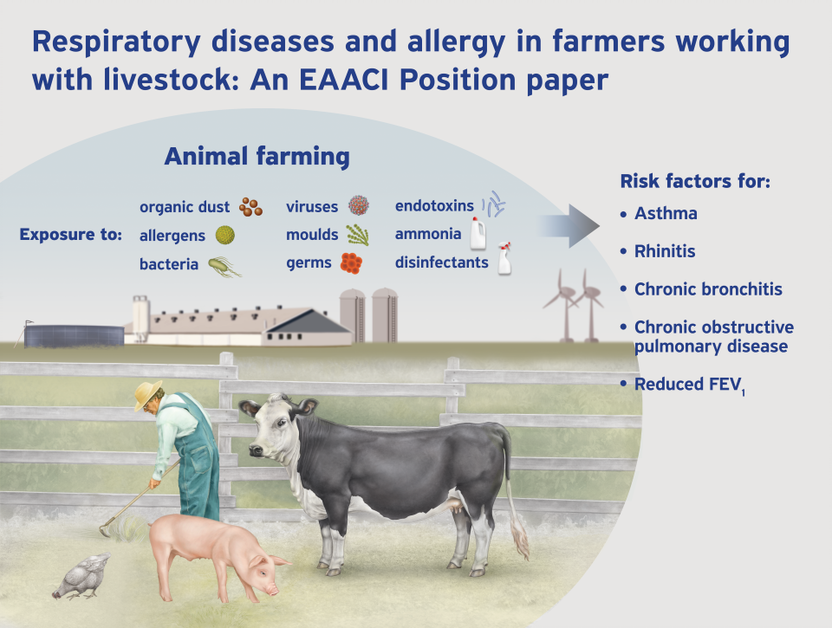The relationship between farm work and lung disease
The relationship between farm work and lung disease
Airway diseases like asthma and rhinitis are common among farm workers, more than in the general population. Some airway diseases are caused by the inhalation of allergens (allergy-causing substances) from animals such as cows and horses, but the most common cause is inhalation of farm dust in stables and barns, containing large amounts of bacteria, microbial endotoxins, molds and chemicals. When inhaled in large amounts these substances irritate the airways and cause inflammation that leads to nasal symptoms (sneezing, stuffy runny nose) and deeper airway symptoms (wheezing, cough) during and after work. Long-term exposure can even cause a decrease in lung function.
While farm workers have a higher risk of developing non-allergic lung diseases, farm life can have beneficial effects on allergy – children who grow up on a farm have a lower risk of developing allergic asthma in later life. This association is further complicated by the fact that farm workers often grew up on farms, therefore careful assessment of allergic vs non-allergic lung diseases is required. Allergy tests may be helpful when a specific allergen is the main cause (eg. cows). However, often these tests may be negative, since farm dust often is acting via other mechanisms that cannot be demonstrated with an allergy test.
Technological changes in modern livestock agriculture – like the use of more modern equipment, and changes in work practices – may help to reduce inhalation of farm dust, but exposure data from studies spanning the last two decades show that exposure to inhaled dust has not significantly changed, and can exceed safe levels. Some studies suggest that better information and education of farmers may help to increase their awareness of the risks and knowledge of improved work practices or specific tools to reduce exposure. The effectiveness of such preventive measures however must be further evaluated.
Read the full paper here
